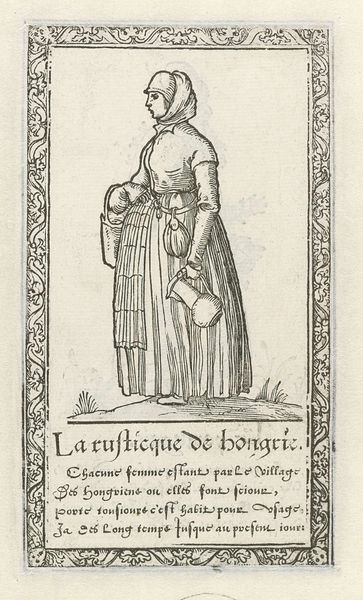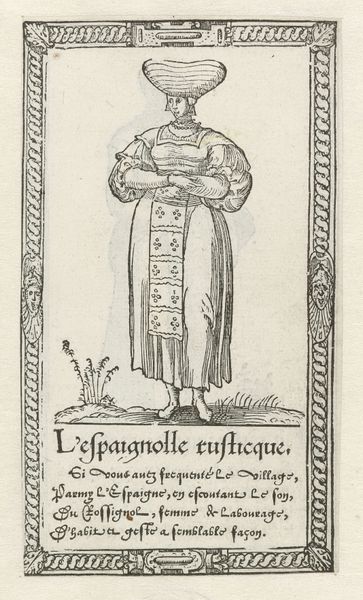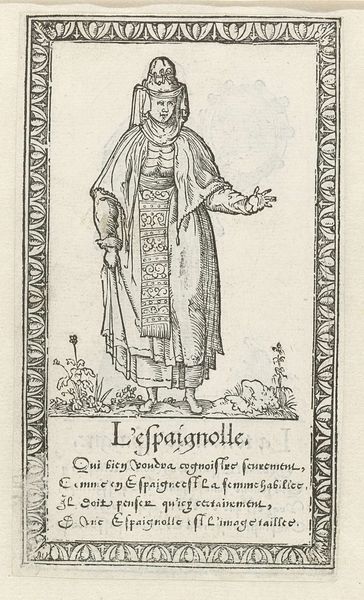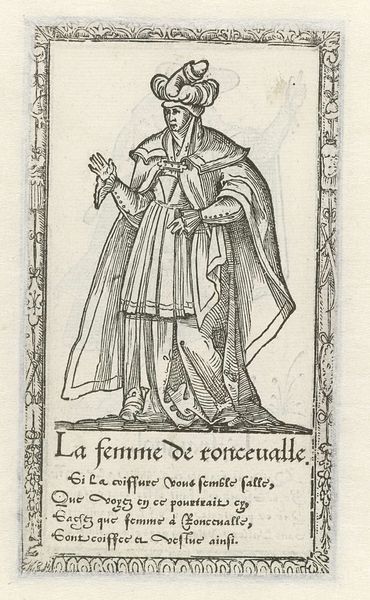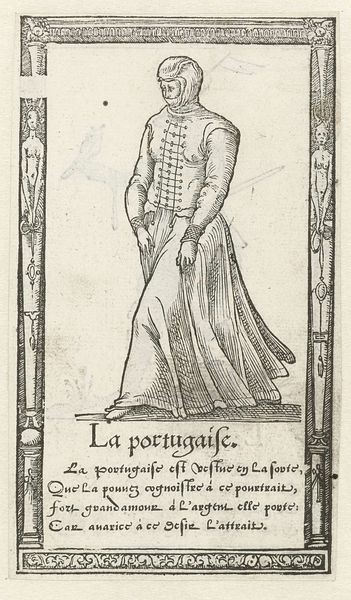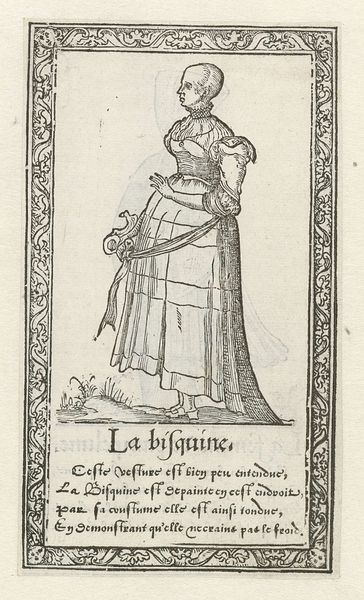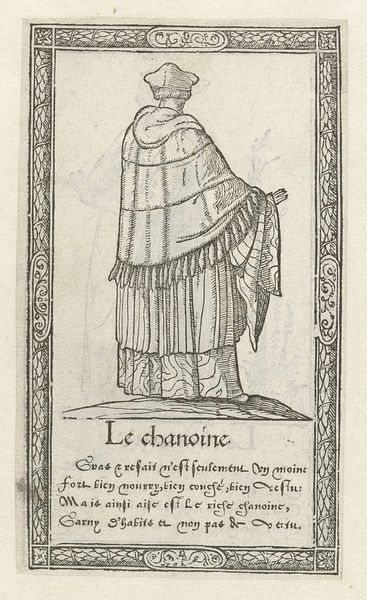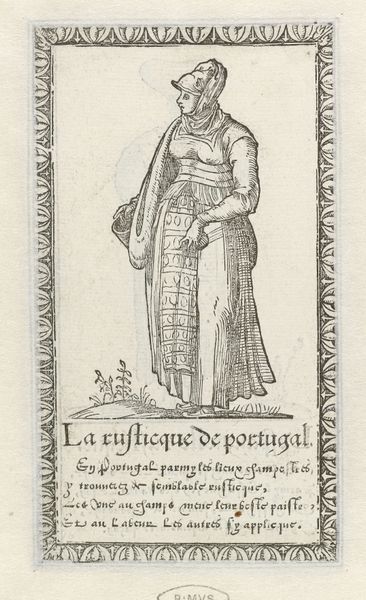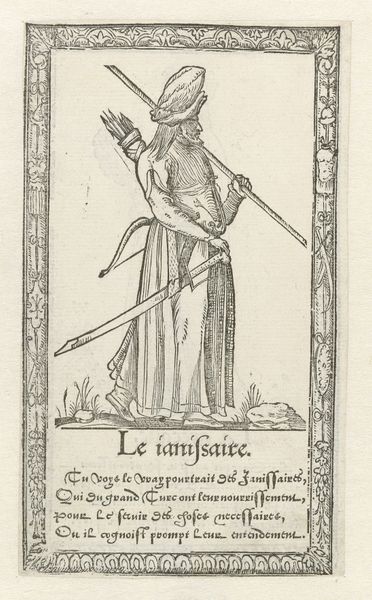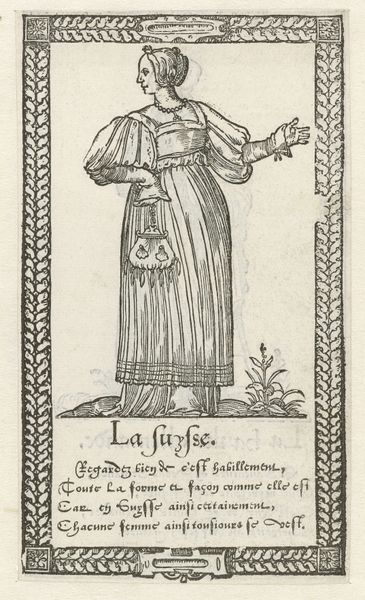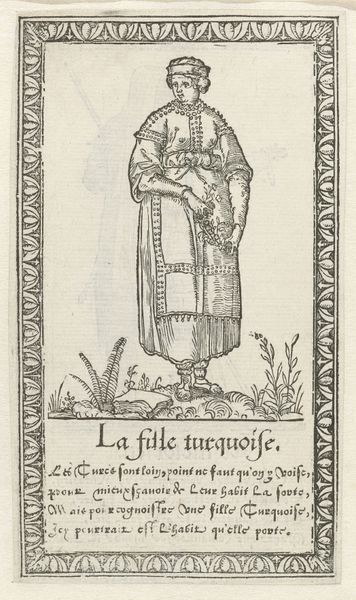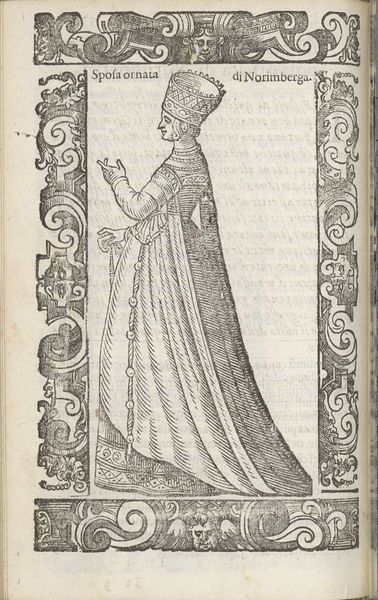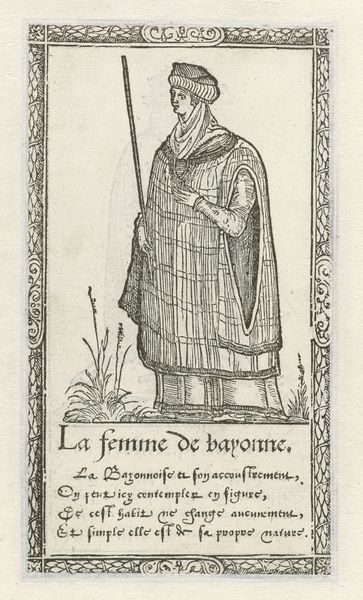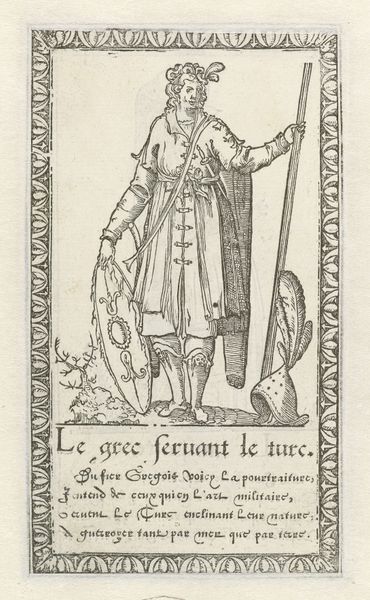
Recueil de la diversité des habits (A Collection of the Various Styles of Clothing) 1562
0:00
0:00
drawing, print, paper, ink, engraving
#
portrait
#
drawing
# print
#
pen illustration
#
figuration
#
paper
#
ink
#
line
#
genre-painting
#
northern-renaissance
#
engraving
Dimensions: height 146 mm, width 85 mm
Copyright: Rijks Museum: Open Domain
Editor: This is François Desprez's "Recueil de la diversité des habits," or "A Collection of the Various Styles of Clothing," created in 1562. It’s an ink drawing or engraving on paper depicting a fashionable woman of the time, and I'm struck by how much detail the artist included, from the embroidery on her sleeves to the pattern of her dress. What kind of function did images like this serve at the time? Curator: This engraving provides a valuable window into the social and cultural history of dress in the 16th century. Consider that this print isn't just a record of what people wore; it's a statement about identity, status, and cultural exchange. These prints were often circulated amongst the wealthy. How might its consumption influence fashion at the time? Editor: It seems like these kinds of illustrations almost created an aspirational fashion culture, or even early "influencers". The fact that there's a little poem beneath suggests it had another purpose beyond just showing what people were wearing. Curator: Exactly. And beyond the aesthetic and aspiration elements, it plays into something more complicated –the exoticism of foreign cultures and, perhaps, even a subtle form of cultural comparison. Think about how "foreignness" was constructed through imagery and what power dynamics might be at play here. Are there things in her dress or demeanor that stand out as "foreign" to someone living in France at the time? Editor: The tall flower, maybe? Or maybe it was that it was so detailed for something mass produced, and in clothing that was only just making its way into other cultures. Curator: It's a great example of how fashion could both define and differentiate social groups, isn't it? And how the production of images helps establish these notions. Editor: I hadn't thought of it in terms of cultural exchange but I now see this wasn’t just about clothes, it was a commentary on society at large. Thanks! Curator: Indeed. Considering the political and social implications enriches our understanding beyond just surface-level appreciation. A fresh look can illuminate hidden messages within these seemingly simple images.
Comments
rijksmuseum about 2 years ago
⋮
This is the very first costume book, with more than a hundred images of clothing from around the world. Below each figure are four lines of verse describing the country’s outfits or related customs. This was an age of unprecedented overseas exploration. Europeans were especially fascinated to see and read about inhabitants of the so-called New World, such as the Brazilian woman with her child 1.
Join the conversation
Join millions of artists and users on Artera today and experience the ultimate creative platform.
